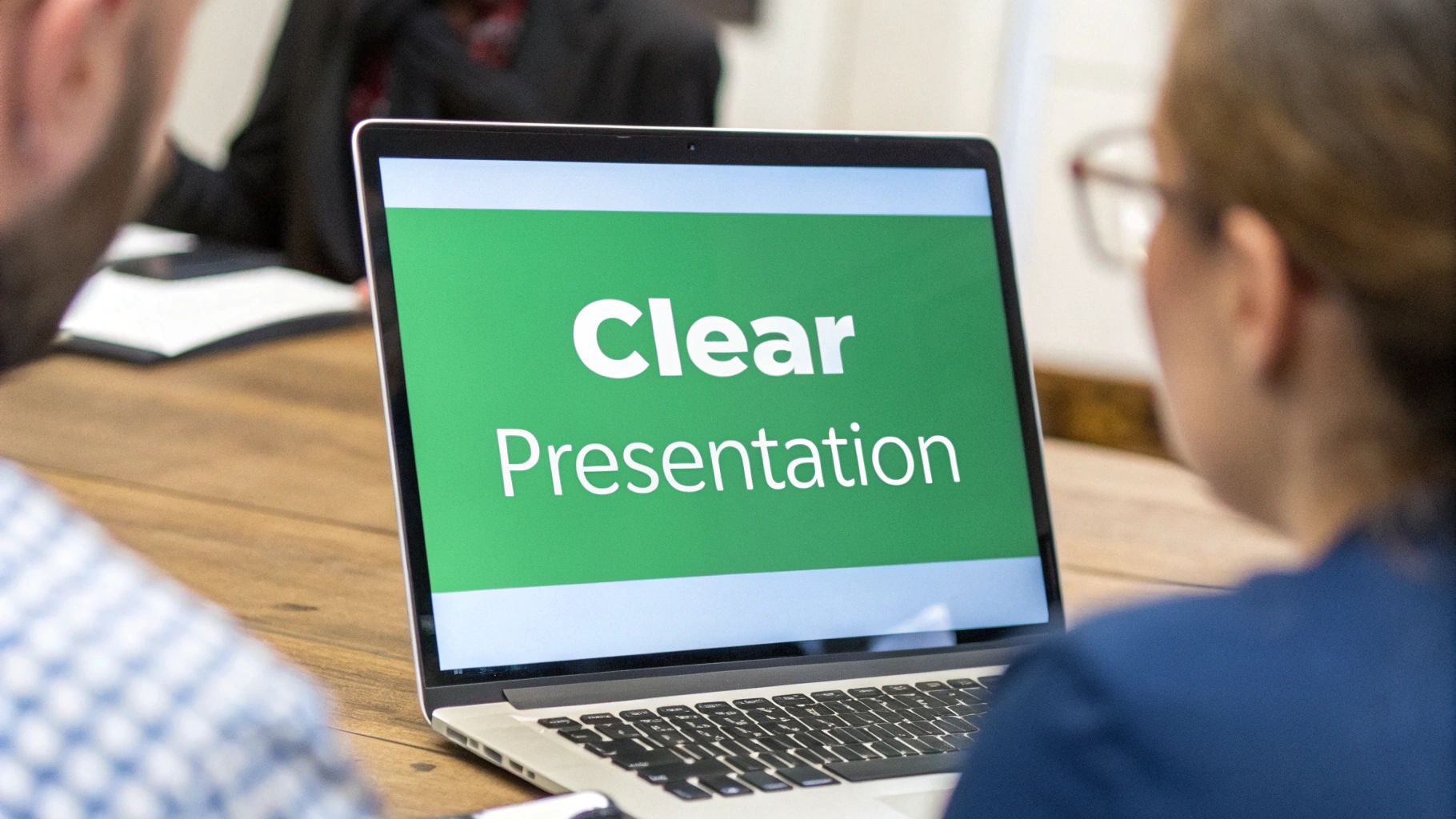The New Reality of Technical Communication in Today’s Workplace

Strong technical communication skills have become essential for success in modern workplaces. As technology grows more complex and teams become more distributed, professionals must be able to convey technical information clearly and effectively. Organizations now recognize that clear communication directly impacts their success and operations.
The Growing Demand for Technical Communicators
Recent data shows the rising importance of technical communication expertise across industries. Job postings requiring these skills increased by 24.9% between 2019-2022, nearly matching the overall job growth rate of 29.4% during this period. This trend spans multiple sectors including manufacturing, finance, healthcare and government agencies. For more details on this growth, see the latest statistics from RIT’s Technical Communication Program.
Impact on Business Outcomes
Good technical communication delivers real business value. When product documentation is clear and user-friendly, companies see higher customer satisfaction and fewer support requests. Teams also work together more smoothly when internal processes and procedures are well-documented. The return on investment becomes clear as efficiency improves and costly miscommunications decrease.
Technical Communication and Career Advancement
Strong technical communication skills can open doors to career growth opportunities. These abilities help professionals explain complex concepts, guide decision-making, and make meaningful contributions to projects. Success requires more than just writing skills though - you need to understand your audience, organize information effectively, and use the right tools for the job. Learn more about developing these skills in our guide on mastering technical communication.
The Importance of Adaptability
New tools and technologies constantly reshape how we communicate technical information. Professionals must stay flexible and embrace emerging solutions like DocuWriter.ai that help create documentation more efficiently. By continuously building their skills and trying new approaches, technical communicators can stay relevant and effective as communication needs evolve. The most successful professionals combine core communication principles with modern tools to deliver clear, accessible technical information.
Building Your Technical Communication Foundation

Clear technical communication requires specific skills to make complex information understandable and useful. It’s about more than just good writing - you need to think strategically about your readers, how you organize information, and which tools will help you communicate most effectively.
Understanding Your Audience
The foundation of effective technical communication starts with knowing your audience. Ask key questions like: Who will read this? What technical knowledge do they have? What are they trying to accomplish? For instance, a developer needs deep technical details about an API, while an end-user wants simple instructions focused on completing tasks. Your audience shapes everything from your word choice to how you structure the information.
Structuring Information Effectively
Good organization makes complex information easier to understand. Think of your content structure like a clear roadmap - it should guide readers naturally from one point to the next. Use headers, lists, and tables strategically to break up dense information and highlight key points. When readers can quickly scan and find what they need, they’re more likely to understand and use the information effectively.
Choosing the Right Language and Tools
Clear language and helpful tools are essential for technical communication. Keep your writing precise and straightforward, especially for non-technical readers. Select tools that make your content more accessible - like diagrams for visual explanations or collaborative platforms for team projects. Tools like DocuWriter.ai can help automate documentation tasks, giving you more time to focus on crafting clear messages.
The Value of Technical Communication Skills
Strong technical communication skills open career doors. A recent survey showed that employers rate communication skills as their most important hiring criteria, with an impressive 4.56 out of 5 rating. You can find more data on this trend here. By mastering these fundamental skills - audience analysis, clear organization, and effective tools - you’ll become a more valuable team member and position yourself for career growth. Most importantly, you’ll help ensure that important technical information reaches the people who need it, in a way they can actually use.
Using Technical Communication to Grow Your Career

Strong technical communication skills do more than just help you complete daily tasks - they can open doors to new opportunities and accelerate your professional growth. When you can explain complex concepts clearly, you demonstrate both your expertise and your ability to lead teams effectively. This combination of skills makes you stand out during interviews and helps you advance within your organization.
Making Your Skills Stand Out in Professional Settings
Here are practical ways to showcase your technical communication abilities during interviews and workplace discussions:
- Share Real Examples: Describe specific projects where your clear communication helped solve problems or improve outcomes
- Show Visual Examples: Use diagrams and charts to demonstrate how you make complex information easier to understand
- Emphasize Team Success: Talk about times when your communication skills helped improve collaboration and processes
Growing Your Professional Impact
Clear communication helps build trust and credibility with colleagues and leaders. When you can articulate technical concepts well, people seek out your input on key decisions and important projects. This creates a positive cycle where better communication leads to more opportunities to contribute and grow.
Steps to Build Your Skills
Try these concrete ways to improve your technical communication:
- Create Your Professional Identity: Start a blog or build a portfolio that shows off your communication strengths
- Keep Learning: Take courses and workshops specifically focused on technical communication methods
- Build Connections: Connect with other professionals through industry groups to share ideas and grow your network Recent data shows just how important these skills are becoming. In the UK, employers now value communication skills even more than university degrees in many roles. The high number of searches for communication training in 2022 shows professionals recognize this trend. Good technical communication has become essential for moving up in your career and getting better opportunities. Read more about communication skills trends.
Mastering Modern Technical Communication Tools

Strong technical communication skills need equally strong tools to help explain complex information effectively. The right tools make it much easier to share knowledge, track projects, and collaborate with teams. Let’s explore how new technologies can improve the way we document and communicate technical information.
The Integration of Traditional and Modern Methods
Clear writing and documentation fundamentals remain essential, but new tools add helpful interactive elements. For example, platforms like DocuWriter.ai can speed up API documentation writing, giving you more time to focus on explaining concepts clearly. This combination of solid writing skills and helpful technology leads to better technical communication overall.
Selecting the Right Tools for Enhanced Workflow
Success with technical communication tools comes from choosing ones that make work easier, not more complex. Here’s what to look for when picking tools:
- Scalability: Select tools that work well as your team grows
- Compatibility: Make sure tools work with your current systems
- User-Friendliness: Choose tools that are easy to learn and use
Strategies for Maximizing Collaboration
Good team communication needs tools that help people work together smoothly. The best platforms let teams edit documents together, share feedback quickly, and keep track of projects in one place. Slack and Trello are great examples - they combine chat and project tracking to help teams stay organized and connected.
Real-World Impact and Success Stories
Companies often see clear benefits when they choose the right communication tools. One tech company reduced project delays by 35% after starting to use a team documentation system that worked well for both office and remote staff. This shows how picking the right tools can make a real difference in how well teams communicate and work together.
To wrap up, the key to using technical communication tools well is picking ones that help you work faster, make collaboration easier, and keep information clear. When you do this right, you’ll communicate more effectively and become more valuable to your team.
Crafting Your Technical Communication Strategy
Good technical communication requires careful planning – just like any successful engineering project. Whether you’re creating documentation, giving presentations, or developing training materials, you need a solid plan that connects with both company goals and your audience’s needs. Here’s how to build an effective communication strategy that gets results.
Defining Clear Objectives
Start by setting specific, measurable goals. For instance, you might aim to cut support tickets by 15% through better product documentation or boost new software adoption by 20% with targeted training. Clear metrics like these help you track progress and give your strategy direction.
Understanding Your Audience and Purpose
Before you write a single word, get to know your audience well. Think about their technical expertise, what information they need, and how they prefer to receive it. A developer will need different details than an end-user. Your purpose matters too - are you teaching something new, explaining a process, or making a case for change? Having this clarity helps shape your message.
Developing a Structured Communication Plan
A good plan works like a roadmap for your project. Write down your key points, pick the right formats (like docs, slides, or videos), and create a timeline that makes sense. This keeps everything organized and helps ensure you don’t miss important details.
Implementing Feedback Loops and Quality Control
Getting feedback early and often makes your communication better. Ask stakeholders, experts, and target readers to review your work throughout the process. Their input helps catch errors and unclear sections before they cause problems. Tools like DocuWriter.ai can help manage this review process, making it easier to track versions and work together.
Adapting Your Strategy Based on Data
Watch how your communication performs over time. Check if support tickets are going down or if more people are using the new software. Use what you learn to adjust your approach – maybe you need simpler language, different examples, or to focus on specific user groups. Small improvements add up to better results.
Resource Allocation and Timeline Management
Make sure you have what you need to succeed. Plan for the time, tools, and people required to do the job right. Set clear deadlines and track progress like any other project. Good planning helps you stay on schedule and within budget while delivering quality work.
Following these steps turns technical communication from a basic task into a valuable business tool. This organized approach leads to clear, consistent messages that get results and show your professional expertise. When done well, good technical communication becomes a real asset to your team and company.
Avoiding Common Pitfalls and Maximizing Success
Technical communication requires skill and attention to detail. Even experienced professionals can encounter challenges that affect their work quality. Let’s explore the most frequent issues and practical ways to overcome them.
The Curse of Knowledge
The curse of knowledge creates a major communication barrier. When you deeply understand a topic, it’s easy to forget that others don’t share your expertise. You might skip essential context or use technical terms without explanation, leaving readers confused and frustrated.
The solution is to consistently view your content through your audience’s eyes. Share drafts with test readers who match your target audience and actively seek their input. Look for opportunities to simplify language and add helpful context where needed.
Ineffective Information Architecture
Poor content organization creates headaches for readers. When documentation lacks clear structure and logical flow, users waste time searching for answers instead of finding solutions. Think of a user manual with randomly arranged chapters - it quickly becomes unusable.
To create clear, accessible content:
- Plan your structure before writing
- Use descriptive headings and subheadings
- Break up text with lists and visuals
- Create clear navigation paths
Ignoring Feedback and Stakeholder Input
Good technical communication requires ongoing dialogue with users and stakeholders. When you skip gathering feedback, problems often surface after publication - missing steps in procedures, unclear graphics, or confusing explanations.
Set up regular feedback cycles throughout your project. Just as software goes through testing phases, documentation needs review and refinement based on real user experiences. Use surveys, interviews, and usability testing to spot issues early.
Managing Expectations and Communication in Crisis
Projects rarely go perfectly smooth. Delays happen, products have bugs, and miscommunications occur. Your response to these challenges shapes how others view your work and credibility.
When issues arise, focus on:
- Communicating openly about the situation
- Explaining specific steps being taken
- Setting realistic timelines
- Keeping stakeholders updated on progress
Maintaining Quality Under Pressure
Tight deadlines and competing priorities create pressure to rush work. But even small errors can damage trust and create lasting confusion for users. Put quality control measures in place from the start:
- Follow style guides consistently
- Use detailed review checklists
- Get peer reviews before publication
- Build in time for thorough editing Tools like DocuWriter.ai can help streamline documentation tasks, giving you more time for quality checks and improvements.
By actively working to prevent these common issues, you’ll create more effective technical content that truly helps your audience. View challenges as chances to improve your process and skills. The result will be higher quality documentation that serves its purpose well.